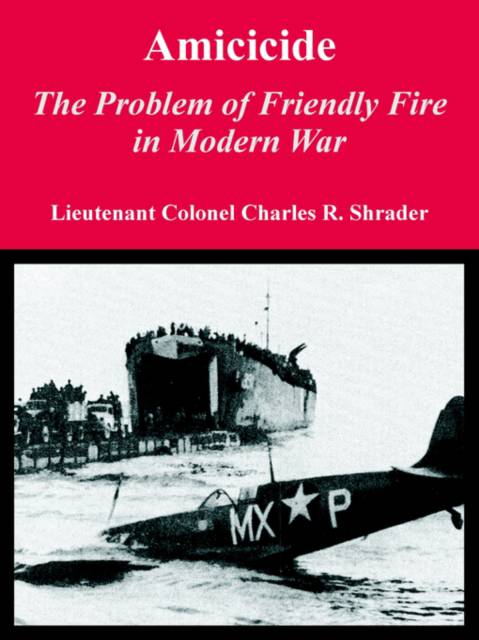
- Retrait gratuit dans votre magasin Club
- 7.000.000 titres dans notre catalogue
- Payer en toute sécurité
- Toujours un magasin près de chez vous
- Retrait gratuit dans votre magasin Club
- 7.000.0000 titres dans notre catalogue
- Payer en toute sécurité
- Toujours un magasin près de chez vous
40,45 €
+ 80 points
Description
War is often depicted in the textbooks as a well-orchestrated, albeit violent, exercise in which opposing units strive to achieve tactical and strategic objectives. That each side will suffer casualties in the process is taken for granted; they are the inevitable, if regretable, consequence of such a deadly undertaking. That each side is almost certain to suffer casualties inflicted by its own forces is not generally taken for granted, Yet, in each of America's wars, especially those of the twentieth century, a significant number of soldiers have been killed or wounded as the result of friendly fire. The fact that the percentage of casualties resulting from friendly fire from World War I through Vietnam has been extremely low does not make the accidental killing or wounding of one's own troops any less tragic or unpalatable. Nor does it offer much consolation to the commander responsible for the lives of his troops or to the soldier who runs the risk of falling victim to the fire of his own forces. It may well be that in the "fog of war" friendly fire casualties are inevitable, but this solemn observation does not absolve the armed forces from doing everything in their power to eliminate the problem. To be sure, each branch of the Army and each of the Armed Services employ measures calculated to prevent incidents of friendly fire. But such measures offer only partial solutions, especially on the modern battlefield where joint and combined forces operate under often obscure conditions. A more comprehensive study of the causes and consequences of friendly fire is needed. That one has not yet appeared is attributable to several factors, foremost among them being the nature of the evidence on which such a study must rely. The required raw data are scattered throughout a variety of primary and secondary, official and unofficial sources. Before one can undertake a serious and comprehensive analysis of friendly fire, these data must be found and brought together in one place. In Amicicide: The Problem of Friendly Fire in Modern War, LTC Charles R. Shrader has taken a major step toward the compilation of these data. From his survey of much of the existing literature on World War I, World War II, the Korean War, and the Vietnam War, he has extracted examples of friendly fire involving U.S. ground forces and has categorized them according to types of incidents. In his well-informed narrative, he draws tentative conclusions about the causes and effects of friendly fire and offers recommendations for those who expect to study the subject further. He has, in short, produced a superb reference book and a springboard for a deeper and more comprehensive analysis of this grim and complex problem. William A. Stofft Colonel, Armor Director, Combat Studies Institute
Spécifications
Parties prenantes
- Auteur(s) :
- Editeur:
Contenu
- Nombre de pages :
- 164
- Langue:
- Anglais
Caractéristiques
- EAN:
- 9781410219916
- Date de parution :
- 27-01-05
- Format:
- Livre broché
- Format numérique:
- Trade paperback (VS)
- Dimensions :
- 210 mm x 279 mm
- Poids :
- 385 g

Les avis
Nous publions uniquement les avis qui respectent les conditions requises. Consultez nos conditions pour les avis.






